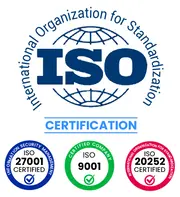US Sacroiliitis Treatment Market Overview
As per MRFR analysis, the US Sacroiliitis Treatment Market Size was estimated at 8.18 (USD Billion) in 2023. The US Sacroiliitis Treatment Market is expected to grow from 10.5 (USD Billion) in 2024 to 65 (USD Billion) by 2035. The US Sacroiliitis Treatment Market CAGR (growth rate) is expected to be around 18.025% during the forecast period (2025 - 2035)
Key US Sacroiliitis Treatment Market Trends Highlighted
The growing number of people seeking medical attention for inflammatory illnesses and chronic pain is driving a noteworthy increase in the diagnosis and awareness of sacroiliitis in the United States. Better access to healthcare and modifications to recommendations that support prompt and precise diagnosis have an impact on this development.
Patients are more likely to receive the right treatment options sooner if more medical professionals and specialists are aware of the subtleties of sacroiliitis. The development of therapeutic alternatives, such as biologics and targeted treatments, which have proven successful in treating inflammatory diseases, is another important motivator.
Both patients and medical professionals are being encouraged to investigate more aggressive treatment approaches by these advancements. The growth of telemedicine, which enables medical professionals to access patients in remote locations or those with mobility issues, is creating new opportunities in the US market.
In addition to making treatment more accessible, this guarantees continued care and observation of sacroiliitis patients. The aging of the US population is also contributing to an increase in the incidence of sacroiliac joint disorders such arthritis. The potential for creating individualized treatment regimens is increasing as more people look for specialized healthcare solutions.
More ongoing research has been conducted recently to better understand the underlying causes of sacroiliitis and develop more specialized and efficient treatments. Technology is increasingly being incorporated into treatment approaches, such as through the use of smartphone apps for patient education and symptom monitoring.
All things considered, the US sacroiliitis treatment market is growing quickly due to improvements in medicine, heightened patient involvement, and an emphasis on individualized therapy. For medical professionals and pharmaceutical businesses focusing on the treatment of sacroiliitis, this setting offers a bright future.

Source: Primary Research, Secondary Research, Market Research Future Database and Analyst Review
US Sacroiliitis Treatment Market Drivers
Rising Prevalence of Sacroiliitis Among the US Population
The US Sacroiliitis Treatment Market is witnessing significant growth due to the increasing prevalence of sacroiliitis among the population.
According to the Centers for Disease Control and Prevention (CDC), inflammatory diseases such as rheumatoid arthritis and ankylosing spondylitis, which are closely linked to sacroiliitis, have shown a rising trend, with approximately 1.5 million adults diagnosed with rheumatoid arthritis in the US.
This increase drives demand for effective treatment options and influences healthcare expenditures on sacroiliitis management, estimated to grow substantially in the coming years.
The need for targeted therapies to alleviate symptoms and improve quality of life is attracting significant interest from established organizations like AbbVie and Celgene, which are advancing research into innovative treatments that directly address this rising patient base.
With national initiatives aimed at enhancing awareness of musculoskeletal disorders, further patient demographic shifts are anticipated, thereby fostering the growth of the US Sacroiliitis Treatment Market.
Advancements in Treatment Technologies
Continuous advancements in treatment technologies are significantly impacting the growth of the US Sacroiliitis Treatment Market. The development of biologic agents and targeted therapies has revolutionized treatment options, allowing for more effective management of sacroiliitis.
For instance, drugs such as Tumor Necrosis Factor (TNF) inhibitors have marked a turning point in treatment effectiveness, as highlighted by recent studies showing over 50% of patients experience improvement in symptoms.
Established organizations like Amgen and Johnson & Johnson are at the forefront of developing these advanced therapies, ensuring accessibility for patients. The rise in innovation is driven by Research and Development investments aimed at understanding the pathophysiology of sacroiliitis, translating to improved therapeutic outcomes and a growing market presence.
Increasing Focus on Chronic Pain Management
The US Sacroiliitis Treatment Market is benefiting from a heightened focus on chronic pain management strategies across the healthcare sector. With chronic pain affecting approximately 20% of adults in the US, as reported by the National Institute of Health (NIH), there is a pressing need for effective interventions for conditions like sacroiliitis.
Healthcare policies and initiatives are increasingly emphasizing the importance of addressing chronic pain, which in turn is driving investment in comprehensive treatment modalities including physical therapy and pharmacological options.
Leading organizations, such as the American Pain Society, are advocating for improved pain management solutions, influencing guidelines to incorporate more robust strategies that encompass the management of sacroiliitis. This growing awareness and policy support are expected to create a conducive environment for the expansion of the US Sacroiliitis Treatment Market.
US Sacroiliitis Treatment Market Segment Insights
Sacroiliitis Treatment Market Type Insights
The US Sacroiliitis Treatment Market depicts a robust structure categorized into various types, each catering to distinct therapeutic needs. The main types include Medications, Joint Injections, Joint Fusion, Radiofrequency Denervation, and Electrical Stimulation.
Medications play a vital role in the initial management of sacroiliitis, commonly involving nonsteroidal anti-inflammatory drugs (NSAIDs), which alleviate pain and reduce inflammation. This segment has garnered attention due to its easy accessibility and widespread physician preference in outpatient settings.
In contrast, Joint Injections, often involving corticosteroids, offer targeted relief for patients whose symptoms do not respond adequately to oral medications, contributing significantly to pain management strategies.
Moreover, Joint Fusion procedures are critical for patients with chronic sacroiliitis, as they provide a long-term solution by stabilizing the joint, thereby improving overall function for individuals suffering from significant impairment.
Radiofrequency Denervation has emerged as a minimally invasive option that diminishes pain signals from the affected nerve, contributing to enhanced patient quality of life through sustained pain management.
Lastly, Electrical Stimulation techniques provide an alternative approach by utilizing electrical impulses to disrupt pain signals, which is gaining traction as patients seek out less invasive therapies. The increasing prevalence of sacroiliitis in the US population, coupled with the rise in healthcare awareness and improved diagnostic capabilities, is propelling the demand for varied treatment types.
The ongoing research in efficacy and safety profiles of these therapies is anticipated to shape the market's evolution. Furthermore, advancements in technology and treatment methodologies are enhancing the clinical outcomes in various types of sacroiliitis treatments, thus ensuring that patients have adequate options tailored to their specific needs.
As healthcare providers continue to seek effective management protocols, these types will likely remain foundational in the overall landscape of the US Sacroiliitis Treatment Market.

Source: Primary Research, Secondary Research, Market Research Future Database and Analyst Review
Sacroiliitis Treatment Market End-user Insights
The US Sacroiliitis Treatment Market's End-user segment encompasses a diverse range of facilities, primarily focusing on Hospitals and Clinics, alongside Other healthcare settings.
Hospitals play an essential role in providing advanced diagnostic and treatment options due to their access to specialized equipment and multidisciplinary teams, making them a significant contributor to the overall care of patients suffering from sacroiliitis. Clinics offer more accessible and individualized treatment approaches, which are favored by many patients in managing their conditions effectively.
Additionally, Other facilities, including outpatient care centers, are increasingly important as they provide alternative care settings, enhancing patient convenience and reducing the burden on traditional hospitals. As the prevalence of sacroiliitis continues to grow, driven partly by rising awareness and better diagnostic techniques, the importance of these End-users will become more pronounced.
The changing dynamics of healthcare, including the shift towards outpatient services, present numerous opportunities for these facilities to expand their offerings and improve patient outcomes in the US Sacroiliitis Treatment Market. Moreover, advancements in treatment modalities are likely to influence the operational strategies of hospitals and clinics, further shaping their roles in the market landscape.
US Sacroiliitis Treatment Market Key Players and Competitive Insights
The US Sacroiliitis Treatment Market is characterized by a diverse array of treatment options designed to address the complexities associated with sacroiliitis, an inflammatory condition that affects the sacroiliac joints.
This market is informed by ongoing research and development initiatives aimed at improving therapeutic efficacy and patient outcomes. The competitive landscape is shaped by key players that strive to innovate while navigating regulatory environments, patent challenges, and the ever-changing dynamics of healthcare needs.
With the increasing incidence of autoimmune disorders and the growing recognition of sacroiliitis as a significant contributor to chronic pain, the demand for effective treatments is on the rise, thereby intensifying competition among market participants.
Players in this market are becoming more tactical in their approaches, seeking partnerships and strategic alliances to enhance their product portfolios, penetrate new market segments, and ultimately improve patient access to treatments.
Amgen stands out in the US Sacroiliitis Treatment Market due to its robust pipeline and expertise in biotechnology which allows for the development of targeted therapies. Their strengths include a strong presence in the immunology sector, particularly with therapies focusing on inflammatory conditions, positioning them uniquely to address the needs of sacroiliitis patients.
Amgen’s established credibility is bolstered by extensive clinical trials that underscore the safety and efficacy of their products, fostering trust among healthcare providers and patients alike. Beyond its existing therapies, the company is known for its commitment to research and continuous innovation.
Their proactive approach in collaborating with research institutions and other biopharmaceutical companies rounds out a comprehensive strategy aimed at expanding their footprint in the US market. Bristol-Myers Squibb is another significant player in the US Sacroiliitis Treatment Market, recognized for its strong portfolio of immuno-oncology products that also have implications for inflammatory diseases.
The company capitalizes on its established reputation and extensive research capabilities, focusing on both small molecules and biologics to address unmet medical needs in sacroiliitis. Core products in this therapeutic area contribute to a solid market presence, while strategic mergers and acquisitions have bolstered their research infrastructure and accelerated the development of new therapies.
Bristol-Myers Squibb has made notable investments in clinical programs specifically targeting sacroiliitis, ensuring that they remain at the forefront of treatment advancements.
Their commitment to comprehensive patient care, coupled with a focus on innovative solutions, positions them effectively within this competitive landscape, allowing for ongoing engagement with healthcare professionals through educational initiatives and support programs that enhance treatment uptake and patient adherence.
Key Companies in the US Sacroiliitis Treatment Market Include
- Amgen
- Bristol-Myers Squibb
- Pfizer
- Regeneron Pharmaceuticals
- Roche
- Gilead Sciences
- Johnson & Johnson
- Eli Lilly
- AstraZeneca
- Merck & Co
- Sanofi
- Novartis
- AbbVie
- UCB
US Sacroiliitis Treatment Market Developments
The US Sacroiliitis Treatment Market has seen significant developments recently. In August 2023, Regeneron Pharmaceuticals announced positive results from a clinical trial for its innovative treatment aimed at alleviating symptoms associated with sacroiliitis, indicating potential shifts in treatment protocols.
Meanwhile, Amgen and Bristol Myers Squibb continue to expand their Research and Development efforts in biologic therapies for inflammatory diseases, with recent collaborations aimed at enhancing treatment efficacy. Growth in the market valuation is influenced by increasing incidence rates of sacroiliitis, prompting companies like Pfizer and Eli Lilly to innovate rapidly.
Additionally, Johnson and Johnson made headlines in October 2022 by launching a new treatment option, which has been well received by both patients and healthcare providers. Notably, Gilead Sciences announced the acquisition of a biopharmaceutical company focused on autoimmune disorders in September 2023, which may enhance its portfolio in the sacroiliitis domain.
These developments reflect a heightened focus on the US market and underscore the competitive landscape of pharmaceutical companies including Roche, AstraZeneca, Merck and Co, Sanofi, Novartis, AbbVie, and UCB adapting their strategies to meet growing demands.
Sacroiliitis Treatment Market Segmentation Insights
Sacroiliitis Treatment Market Type Outlook
- Medications
- Joint Injections
- Joint Fusion
- Radiofrequency Denervation
- Electrical Stimulation
Sacroiliitis Treatment Market End-user Outlook
| Report Attribute/Metric |
Details |
| Market Size 2023 |
8.18(USD Billion) |
| Market Size 2024 |
10.5(USD Billion) |
| Market Size 2035 |
65.0(USD Billion) |
| Compound Annual Growth Rate (CAGR) |
18.025% (2025 - 2035) |
| Report Coverage |
Revenue Forecast, Competitive Landscape, Growth Factors, and Trends |
| Base Year |
2024 |
| Market Forecast Period |
2025 - 2035 |
| Historical Data |
2019 - 2024 |
| Market Forecast Units |
USD Billion |
| Key Companies Profiled |
Amgen, Bristol-Myers Squibb, Pfizer, Regeneron Pharmaceuticals, Roche, Gilead Sciences, Johnson & Johnson, Eli Lilly, AstraZeneca, Merck & Co, Sanofi, Novartis, AbbVie, UCB |
| Segments Covered |
Type, End-user |
| Key Market Opportunities |
Biologic drug development potential, Increased awareness and diagnosis, Telehealth integration for treatment, Targeted therapies innovation, Enhanced patient support programs |
| Key Market Dynamics |
rising prevalence of sacroiliitis, increasing healthcare expenditure, advancement in treatment options, growing awareness of symptoms, favorable reimbursement policies |
| Countries Covered |
US |
Frequently Asked Questions (FAQ):
The US Sacroiliitis Treatment Market was valued at 10.5 USD Billion in 2024.
By 2035, the US Sacroiliitis Treatment Market is anticipated to reach a valuation of 65.0 USD Billion.
The expected CAGR for the US Sacroiliitis Treatment Market from 2025 to 2035 is 18.025%.
By 2035, the Medications segment is projected to dominate the market, valued at 20.8 USD Billion.
The Joint Injections segment was valued at 2.1 USD Billion in the US Sacroiliitis Treatment Market in 2024.
Major players include Amgen, Bristol-Myers Squibb, Pfizer, Regeneron Pharmaceuticals, and Roche.
The market size for Electrical Stimulation is expected to reach 9.9 USD Billion by 2035.
The market presents opportunities driven by increasing prevalence of sacroiliitis and advancements in treatment options.
Radiofrequency Denervation was valued at 2.0 USD Billion in 2024 and projected to reach 12.0 USD Billion by 2035.
The Joint Fusion segment is significant, with an expected market size of 9.8 USD Billion by 2035.
















